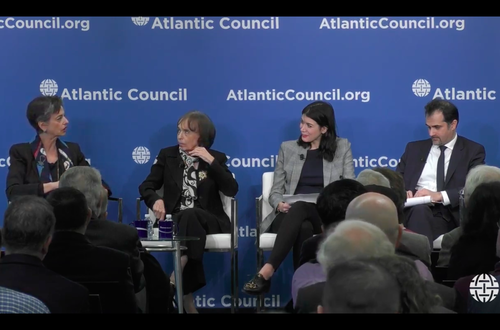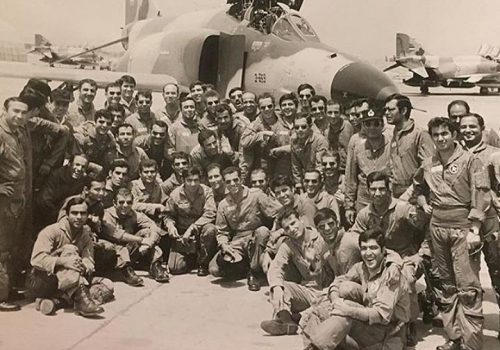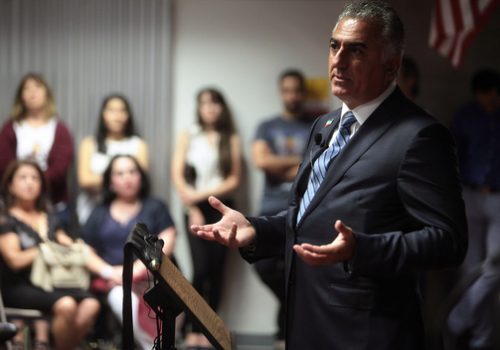Reza Shah: Development without democracy
Reza Shah, a middle-ranking officer in Iran’s Cossack Brigade, seized power in 1921 and, for the next twenty years, dominated and transformed Iran as commander of the army, prime minister, and finally king.
He relied on a number of highly qualified—often Western-educated—Individuals whom he appointed to ministerial and administrative posts and whose ideas for reform and modernization he espoused. These men knew that their country had fallen behind the times and they aspired for an Iran that was modern, well-governed, and with strong state institutions. Democratic freedoms were not central to the agenda.
The Iran Reza Khan took over was in decline. The revenues of the state were inadequate to meet even basic expenses. The country had no army, with the only viable military force being the small, Russian-officered Cossack Brigade. The government had little control over large tribal areas; the roads between towns were unsafe due to tribal raiding. Rebel, quasi-separatist movements had emerged in the three principal provinces: Gilan, Azerbaijan, and Khorasan. The government was helpless to prevent foreign armies—Ottoman, German, British, and Russian–from violating Iran’s frontiers during World War I. Iran’s two great-power neighbors, Britain and the Soviet Union, interfered in its domestic affairs.
Rivalry and division characterized the ruling political elite. Six cabinets changed hands in a nineteen-month period. Corruption was widespread. The young monarch, Ahmad Shah, demanded a bribe from the British government in the form of a monthly payment to appoint and keep in office Ahmad Vosuq, who was favored by the British, as prime minister. Vosuq and two of his ministers were instrumental in negotiating the Anglo-Persian Agreement of 1919, which provided for the appointment of British advisors to reorganize virtually all major departments and a £2,000,000 loan to finance railway and other development projects. To shepherd the agreement through parliament, Vosuq and his two cabinet colleagues asked for a £200,000 advance, allegedly to pay off the deputies, which they pocketed. Officers in the Cossack Brigade skimmed the pay of the soldiers to share between themselves and civil servants.
Reza Khan and the men around him aimed at state-building and renewal in its broadest sense. Thanks to a conscription law—the country’s first—he increased the size of the army from a few thousand to over 120,000. He made sure the army was well funded, purchased weapons abroad, and sent officers to European military academies for military training. If the soldier conscripts were poorly paid, his officer class was compensated reasonably well and enjoyed other privileges. He used the army to bring unruly tribes to heel, to quash rebel movements in the provinces, and to discipline Shaikh Khaz’al, who had achieved quasi-autonomous status in the oil-rich province of Khuzestan.
Existing ministries were restructured and new ones were created. The civil service was reorganized along European lines. Mayors were appointed to major towns and cities and municipal administrations were created.
Judicial reform was another major undertaking. A system of graduated courts was created at the local, county, and provincial levels. The laws were codified, resulting in a civil code, a commercial code, and a penal code, often based on French models. Judges were trained at the new Faculty of Law at Tehran University. In drawing up the civil code, care was taken not to appear to violate Islamic law; but, in effect, the court system was secularized and the religious courts marginalized—confined to family matters such as marriage, divorce, and child custody. A national registration office and a nationwide system of notary publics was created for the registration and notarization of contracts, deeds, birth, marriage, and death certificates—functions previously performed by clergy.
Reza Shah gradually put in place a nationwide system of primary and secondary schools for girls and boys and over thirty teacher-training colleges. In 1936, Tehran University—the country’s first—opened its doors to both men and women, offering instruction in the humanities and the sciences, engineering, law, and medicine. Public spaces, such as cafés, restaurants, and hotels were also made open to woman. Women were encouraged to enter “appropriate” occupations, such as teaching and nursing. In a particularly controversial step, the chador, the form of Islamic dress that covered women from head to toe, was banned in 1936.
Like much else in the Reza Shah era, economic development was also led by the state. The government established factories for basic, previously imported goods like textiles, cigarettes, matches, soap, candles, foundries, and some chemicals. Imports were controlled by a state-run monopoly. Motorable roads were built between major towns and cities. In 1938, the trans-Iranian railway, an aspiration of reformers since the 19th century, was completed.
The ministry of finance was thoroughly reorganized, the haphazard system of taxation was replaced by uniform income, land, and import taxes. In 1927, a national bank, another aim of nationalists since the Constitutional Revolution, was established, serving the government as a central bank and taking over the issuing of banknotes from a British-owned bank. Urban renewal occurred in cities and large towns across the country.
An assault on the influence and role of the clergy, whom the men around Reza Shah regarded as an obstacle to reform, was another notable feature of the period. The new school system, the codification of laws, and secular courts undercut clerical influence in spheres where they had been dominant. The state interfered with the administration of religious endowments and even regulated the curriculum and examination of students at religious seminaries.
The men around Reza Shah aimed at forging Iranians into a nation, with primary loyalty to Iran rather than to tribe, clan, or ethnic community. This meant more social engineering from top-down. Students and boy scouts were taught to take pride in the ancient glories of Iran. A language academy devoted itself to replacing widely prevalent Arabic words with Persian equivalents. In 1927, all Iranian men were required to wear the Pahlavi hat, a head cover that resembled the French kepi, replacing a variety of tribal and local head coverings. The 1929 uniform dress code required all Iranian men, with the exception of members of the clergy, to wear European-style jackets.
Reza Shah, an autocrat by instinct, grew more autocratic during his reign. At his direction, the press was controlled. Radio remained a state monopoly. Political parties virtually ceased to exist. Elections were strictly controlled with Reza Shah often selecting the “winning” candidates for parliamentary seats. Real or potential rivals for power or influence ended up in prison or were crushed in other ways. The result was sycophancy and fear of speaking out among ministers.
Thus, though Reza Shah was undeniably the architect of modern Iran, he did not leave behind the institutions, political practices, and habits of mind that might have resulted in the development of a free press and sustainable democratic institutions.
Shaul Bakhash is the Clarence Robinson Professor of History Emeritus at George Mason University and the author of a number of books on Iran. His account of Reza Shah’s final years, The Fall of Reza Shah: The Abdication, Exile, and Death of Modern Iran’s Founder, was published by the Bloomsbury Press in January 2021.
Image: Farhad Besharati, 54, holds a bust of former Shah of Iran Reza Shah Pahlavi at his travel agency in Westwood, Los Angeles, California, United States July 14, 2015. Iran and six major world powers reached a nuclear deal on Tuesday, capping more than a decade of negotiations with an agreement that could transform the Middle East. REUTERS/Lucy Nicholson


